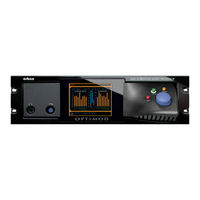
Orban OPTIMOD 8685 Manuals
Manuals and User Guides for Orban OPTIMOD 8685. We have 1 Orban OPTIMOD 8685 manual available for free PDF download: Operating Manual
Orban OPTIMOD 8685 Operating Manual (357 pages)
Surround Audio Processor
Brand: Orban
|
Category: Computer Hardware
|
Size: 9 MB
Table of Contents
Advertisement
